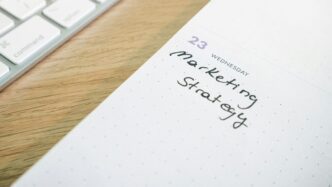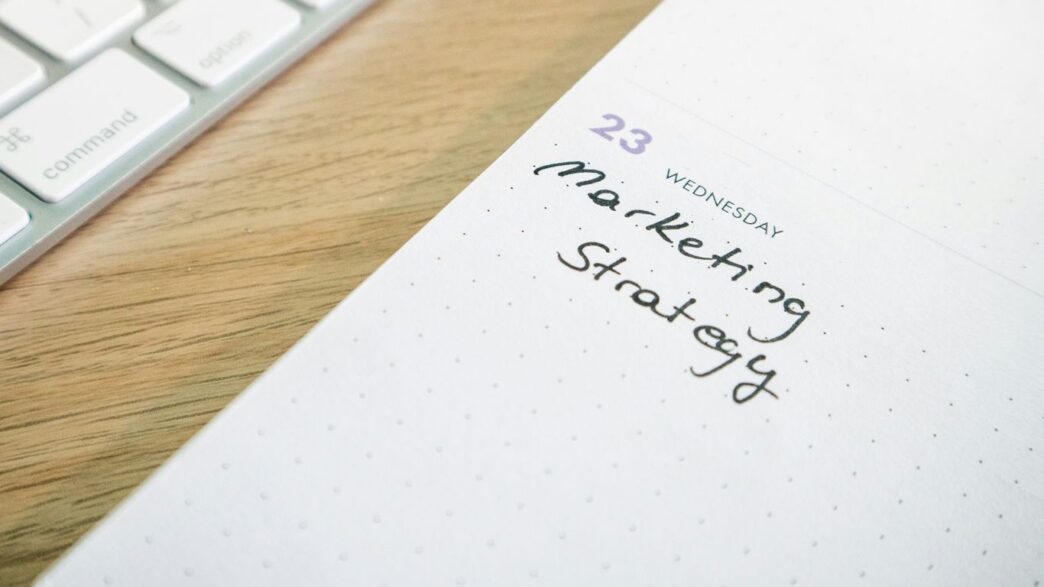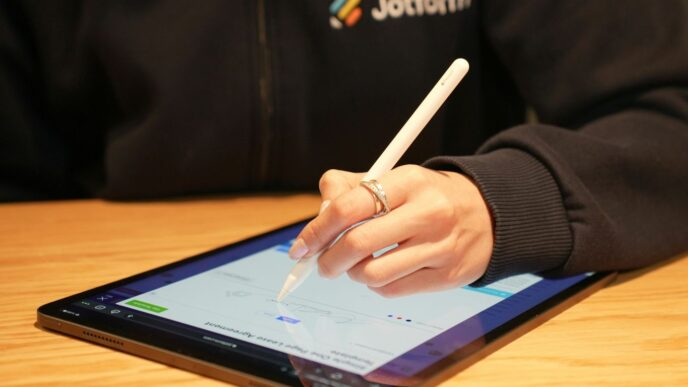So, you want to make a newsletter that people actually want to read? It’s not as hard as it sounds. Think about it, everyone’s inbox is packed these days. Getting someone to open your email, let alone read it, takes a bit of know-how. We’re talking about the basic elements of newsletter design and content that make a difference. It’s about knowing who you’re talking to and giving them something they can’t get anywhere else. Let’s break down what makes a newsletter good.
Key Takeaways
- Know who you’re talking to: Figure out exactly who your newsletter is for. This helps you write content that actually matters to them.
- Show you know your stuff: Write about what you understand well. People subscribe to learn or stay updated, so be the person who can teach them.
- Offer something special: Make sure the content in your newsletter is unique. If readers can’t find it somewhere else, they’ll keep coming back.
- Keep it looking good and easy to read: A clean design, especially on phones, makes a big difference. People won’t stick around if it’s a mess.
- Ask them to do something: Tell readers what you want them to do next, like visit a website or reply to an email. Make it clear and simple.
Understanding the Core Elements of Newsletter Success

So, you want to make a newsletter that people actually want to read? It sounds simple enough, right? Just send out an email. But if you’ve ever tried to start one, you know it’s a bit more complicated than that. It’s easy to get lost in the weeds, especially when you see all the amazing newsletters out there. What makes them tick? What are they doing differently? Well, it boils down to a few key things that make all the difference.
Defining Your Target Audience
First off, who are you even talking to? You can’t just shout into the void and expect people to listen. You need to know who you’re trying to reach. Think about it: where do they hang out online? What are their interests? What problems are they trying to solve? Knowing your audience inside and out is the bedrock of a successful newsletter. If you don’t know who you’re talking to, your message will likely fall flat. It’s like trying to sell ice cream in Antarctica – doesn’t make much sense, does it?
Establishing Expertise and Authority
People subscribe to newsletters because they want to learn something, get an edge, or stay in the loop on a topic they care about. This means the person sending the newsletter needs to know their stuff. If you’re writing about gardening, you better know your petunias from your potatoes. Readers expect to gain knowledge or a fresh perspective. If you’re just repeating what everyone else is saying, why would they stick around? It’s about showing you’ve got the chops to back up what you’re writing.
Delivering Unique and Valuable Content
This is where you really shine. What makes your newsletter different from the hundreds of others in someone’s inbox? It’s the content, plain and simple. Your newsletter needs to offer something special, something readers can’t easily find anywhere else. This doesn’t mean you need to invent a new language or discover a cure for the common cold. It could be a unique take on current events, a curated list of the best resources on a niche topic, or a behind-the-scenes look at your work. The goal is to give people a reason to open your email and feel like their time was well spent.
Crafting a Compelling Newsletter Identity
Think of your newsletter’s identity like a handshake. It’s the first real impression you make, and it needs to feel right. This isn’t just about slapping your logo on something; it’s about building a consistent feel that readers recognize and look forward to.
Developing a Memorable Branded Banner
Your banner is like the cover of a book. It’s the very first thing someone sees when they open your email. It needs to tell them who you are and why they should care, right away. Some newsletters just use plain text, which can work if your brand is super simple, like a news summary. But for most, a little visual flair goes a long way. You don’t need to be a graphic designer. Tools like Canva have easy templates, or you could hire someone on sites like Fiverr for a reasonable price. The main thing is that it fits your newsletter’s vibe.
Defining Your Newsletter’s Personality and Tone
How do you want your newsletter to sound? Are you the friendly neighbor sharing tips, the serious expert breaking down complex topics, or the witty friend making you laugh? Your voice is what makes people connect with you personally. It’s not just what you say, but how you say it. This tone should show up in everything, from your banner to the way you write your intro. If you’re writing about finance, you might be more direct. If it’s about hobbies, maybe more casual and fun. Whatever it is, stick with it so readers know what to expect.
Choosing an Identifiable and Flexible Format
What does your newsletter actually look like inside? There isn’t a single right answer here. Some newsletters are just a list of links, others are long-form articles, and some are a mix. Think about what makes sense for the content you’re sharing and who you’re sharing it with. A format that’s easy to scan on a phone is usually a good bet. You want readers to be able to quickly find what they’re looking for, whether that’s a quick update or a deep dive into a topic. It should be clear what kind of content they’re getting each time they open it.
Designing for Reader Engagement
Making sure your newsletter actually gets read is a big deal. It’s not just about sending stuff out; it’s about making it easy and enjoyable for people to look at. Think about it like setting up a really nice shop – you want people to walk in, look around, and feel good about being there.
Creating a Clear and Usable Design
First off, keep it simple. Nobody wants to wade through a confusing mess of text and images. A clean layout with plenty of white space makes a huge difference. It helps guide the reader’s eye and makes the content feel less overwhelming. A good rule of thumb is to aim for a design that’s easy to scan quickly. This means using clear headings, short paragraphs, and maybe some bullet points to break things up. You want people to be able to find what they’re looking for without a struggle. It’s also super important to make sure your newsletter looks good on phones, because let’s be honest, that’s where most people will be reading it. Test it out on different devices to catch any weird formatting issues. A consistent design across all your emails also helps people recognize your brand instantly, which can boost how often they click on things by about 23%.
Balancing Diverse Content Types
People like variety, right? Your newsletter should be no different. While you want to share useful information, mixing it up keeps things interesting. Think about a good balance between educational stuff and, well, the stuff you’re trying to sell. Most of the time, you’ll want to lean heavily on the educational side – maybe 90% educational content and 10% promotional. This builds trust and shows you know your stuff. But don’t forget visuals! Images, charts, or even simple graphics can really grab attention and help explain things better than words alone. It’s like adding a bit of spice to a meal; it makes the whole experience better. You can even use graphics to break up text and keep readers interested.
Leveraging Visual Elements Effectively
Visuals aren’t just pretty pictures; they’re tools. They can grab attention right away, making someone pause their scrolling and actually look at your newsletter. Think about using images that relate directly to the topic you’re discussing. Infographics are fantastic for presenting data in an easy-to-digest format. Even a well-placed photo can add personality. Just be careful not to go overboard. Too many visuals can make a newsletter look cluttered and slow to load. It’s about using them strategically to support your message, not just to fill space. Consider what kind of visuals best represent your brand and the information you’re sharing. Sometimes, a simple, high-quality image is far more effective than a dozen small, busy ones.
Optimizing Newsletter Structure and Delivery
Getting your newsletter to look good and arrive reliably is a big part of making sure people actually read it. It’s not just about what you say, but how you say it and how it gets to your subscribers. Think of it like setting up a really nice display in a shop – if it’s messy or hard to see, people might just walk on by.
Structuring for Readability and Flow
How you arrange your content makes a huge difference. Nobody wants to stare at a wall of text. Breaking things up with headings, short paragraphs, and bullet points makes it way easier to scan and digest. A well-structured newsletter guides the reader’s eye naturally through the content.
Here’s a simple way to think about structuring:
- Start Strong: Grab attention right away with a clear headline or a compelling intro. What’s the main point of this issue?
- Organize Logically: Group related information together. Use subheadings to signal new topics or sections.
- Keep it Scannable: Use bullet points or numbered lists for key takeaways, steps, or lists of items. This helps readers quickly find what they’re looking for.
- End with a Purpose: Finish with a clear call to action or a summary that reinforces the main message.
Ensuring Mobile Optimization
Most people check their email on their phones these days. If your newsletter looks jumbled or tiny on a small screen, you’re going to lose readers fast. Most email tools let you preview how your newsletter will look on different devices, which is super handy. Make sure the text is readable without zooming and that any buttons or links are easy to tap.
Maintaining a Consistent Layout
Consistency builds recognition. When your newsletter always looks and feels the same, subscribers know what to expect. This includes your branding, like logos and colors, but also the general layout of your content. A consistent design helps build trust and makes your newsletter feel more professional. It’s like seeing a familiar face in a crowd; it makes you feel comfortable. Studies show that consistent branding can really boost how often people click on things in your emails. You can find some great email newsletter best practices to help with this.
Think about these elements for consistency:
- Header/Banner: Always in the same spot, with your logo.
- Font Choices: Stick to one or two easy-to-read fonts.
- Color Palette: Use your brand colors consistently.
- Spacing: Maintain consistent padding and margins between sections.
- Call-to-Action Buttons: Make them look the same every time.
Driving Action and Interaction
So, you’ve got a great newsletter, right? It looks good, the content is solid, and people are opening it. That’s awesome! But what’s the point if nobody actually does anything after reading it? We need to get our readers to take the next step, whatever that might be. It’s about turning passive readers into active participants.
Incorporating Clear Calls-to-Action
This is where we tell people what we want them to do. Don’t just hope they’ll figure it out. Be direct. Think about what action makes sense for that specific email. Are you trying to get them to read a blog post? Buy something? Sign up for a webinar? Whatever it is, make it super obvious. A clear call-to-action (CTA) is your newsletter’s engine for getting things done.
Here are some pointers for making your CTAs work:
- Keep it simple: Use words that tell people exactly what to do, like "Shop Now," "Read More," or "Register Today." Avoid confusing phrases.
- Make it stand out: Use a button or a different color so it doesn’t get lost in the text. People should see it right away.
- One main goal: Try not to have too many CTAs in one email. It can overwhelm readers. Focus on the most important action you want them to take. You can find some great call-to-action templates to get you started.
Fostering Reader Interaction and Feedback
Getting people to just read is good, but getting them to talk back is even better. It makes them feel like part of a community, not just another name on a list. Plus, you get to hear what they actually think, which is gold for improving your newsletter.
How can you get them talking?
- Ask questions: End your newsletter with a question related to the content. "What do you think about X?" or "What’s your biggest challenge with Y?"
- Run polls or surveys: These are quick ways for people to give their opinion. You can ask about future content ideas or their preferences.
- Encourage replies: Make it clear that you welcome replies to your newsletter. You might even feature some interesting responses in a future issue (with permission, of course!).
Strategically Including Promotional Content
Look, we all have things to sell or promote, whether it’s our own products, services, or an affiliate offer. The trick is to do it without annoying your subscribers. Nobody likes a constant sales pitch. It needs to feel natural and helpful, not forced.
Think about it this way:
- Value first, promotion second: Make sure the majority of your newsletter is useful content. Then, when you do promote something, it should feel like a natural next step or a solution to a problem you’ve just discussed.
- Segment your list: If you can, send promotions only to the people who are most likely to be interested. This means less annoyance for everyone else.
- Be transparent: If it’s an affiliate link, say so. Honesty builds trust, and trust keeps people subscribed.
Sustaining Performance Through Analysis and Consistency
So, you’ve put in the work to build a great newsletter. That’s awesome! But the job isn’t done. To keep things running smoothly and actually get better over time, you need to pay attention to a couple of big things: sticking to a schedule and actually looking at what’s happening with your emails.
Committing to Consistent Publishing Schedules
This is a big one. If you say you’re sending out a newsletter every Tuesday, then you better send it out every Tuesday. Your readers start to expect it. When you’re reliable, they know when to look forward to your content. It builds trust, plain and simple. If you miss a week, or send it out randomly, people forget about you. It’s like that friend who always cancels plans last minute – you stop relying on them. So, pick a schedule you can actually stick to, whether that’s weekly, bi-weekly, or monthly, and then just do it. Don’t overthink it too much.
Monitoring and Analyzing Newsletter Performance
Okay, so you’re sending stuff out regularly. Now, what? You need to see if people are actually reading it. This means looking at some numbers. Don’t get scared by the data; it’s just information to help you do better.
Here are some key things to check:
- Open Rate: This is just the percentage of people who open your email. If it’s low, maybe your subject line needs work, or you’re sending at the wrong time.
- Click-Through Rate (CTR): This shows how many people clicked on a link inside your newsletter. A good CTR means your content is interesting enough to make people want to learn more.
- Unsubscribe Rate: Nobody likes seeing people leave, but it happens. A sudden spike in unsubscribes might mean your content isn’t hitting the mark anymore, or you’re sending too often.
- New Subscribers: Where are they coming from? Knowing this helps you focus your efforts on what’s working to bring new people in.
Looking at these numbers helps you figure out what’s working and what’s not. It’s not about getting perfect scores, but about making small changes that add up.
Building and Maintaining a High-Quality Subscriber List
Your subscriber list is like the foundation of your newsletter. If it’s full of people who don’t care, your numbers will look bad no matter what you do. So, you need to keep it clean and growing with the right people.
- Get new subscribers: Use signup forms on your website, mention it on social media, or even offer a small freebie (like a checklist or guide) for signing up. Make it easy for people to join.
- Clean out inactive subscribers: If someone hasn’t opened your emails in months, they’re probably not interested anymore. It’s better to remove them. This makes your open rates look better and saves you money if you’re paying for an email service based on subscriber count.
- Segment your list: As your list grows, you might notice different groups of people are interested in different things. You can send slightly different versions of your newsletter to these groups to make sure everyone gets content they actually want. This keeps people engaged and less likely to unsubscribe.
Wrapping It Up
So, we’ve gone over a bunch of stuff about making newsletters that people actually want to read. It’s not just about sending emails; it’s about building a connection. Think about who you’re talking to, what they care about, and how you can give them something useful or interesting. Keep it real with your voice, make it look decent, and don’t forget to check if people are actually opening and clicking. It takes work, for sure, but putting in that effort to make a good newsletter really pays off in the long run. Don’t get discouraged if your first few aren’t perfect. Just keep tweaking, keep learning, and you’ll get there.
Frequently Asked Questions
Why is knowing my audience so important for a newsletter?
It’s like trying to talk to someone without knowing who they are or what they like. If you know who you’re talking to, you can pick topics and use words that they’ll understand and care about. This makes them more likely to read your newsletter and stick around.
What makes content ‘valuable’ in a newsletter?
Valuable content is like a helpful tip or a cool secret that people can’t easily find anywhere else. It should teach them something new, solve a problem, or give them a unique perspective. When your content is special, people will look forward to getting your emails.
How can I make my newsletter look good and be easy to read?
Think of it like a well-organized room. Use clear headings, short sentences, and enough empty space so it doesn’t feel crowded. Also, make sure it looks good on phones, because that’s how most people will read it.
Should I include ads or promotions in my newsletter?
A little bit is okay, but don’t overdo it. Most of your newsletter should be helpful or interesting content. Think of promotions as a small bonus, not the main event. A good rule is to have way more helpful stuff than sales pitches.
How often should I send out my newsletter?
Consistency is super important! Pick a schedule you can stick to, whether it’s once a week or once a month, and do your best to send it out on time. This helps your readers know when to expect it and builds trust.
How do I know if my newsletter is actually working well?
You need to check how many people open your emails and how many click on the links inside. This tells you if your subject lines are good and if your content is interesting. It’s like looking at your grades to see how you’re doing in school.














